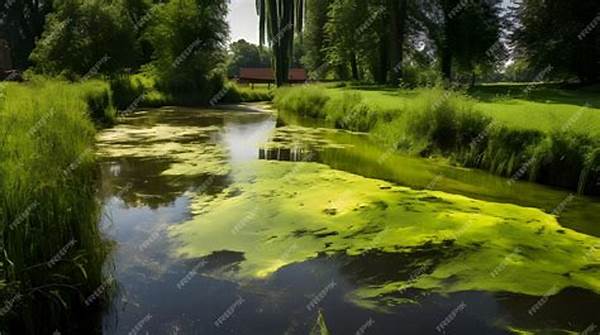The gentle touch of a farmer’s hand on the soil is a bond that transcends generations. Imagine their heartbreak as they watch the vitality of their land fade under the weight of chemicals meant to sustain. Our mission is clear: to embrace sustainable practices and breathe life back into the earth by minimizing chemical runoff in agriculture.
Read More : Cutting-edge Filter Material Engineering
The Heart of the Matter: Why It Matters
Every drop counts. As rain kisses the earth, it carries with it the remnants of fertilizers and pesticides. These chemicals, though intended to nurture crops, can cascade into nearby waterways, weaving through ecosystems like an unwelcome thread. Minimizing chemical runoff in agriculture is crucial; it’s a call to preserve the rivers and streams that sustain life, urging us to protect our shared legacy. By reflecting on our impact, we can mend the bond between human activity and nature, ensuring a harmonious existence where agriculture flourishes without sacrificing our planet’s integrity. This is not just a responsibility—it’s an opportunity to rewrite our relationship with the land, cultivating a future where nature and nurture are one.
Cultivating Change: Steps Towards Solutions
1. Embracing Cover Crops
Underneath the vibrant tapestry of cover crops lies a world where the soil heals. By minimizing chemical runoff in agriculture, these plants gracefully hold onto nutrients, preventing them from escaping into the wider world.
2. Buffer Zones: Nature’s Shield
The embrace of lush vegetation along field edges is nature’s way of protecting water. These buffer zones humbly stand guard, offering their leaves and roots as shields in the journey towards minimizing chemical runoff in agriculture.
3. Precision Agriculture: A Balancing Act
This dance of technology and tradition guides every fertilizer granule into place, ensuring crops receive what they need, and no more. With this precision, minimizing chemical runoff in agriculture becomes not just a practice, but a promise.
4. Education: Empowering Minds
By fostering a culture of understanding, the farming community can embark on a collective journey. Knowledge is the compass leading us through the challenges of minimizing chemical runoff in agriculture, ultimately anchoring it in our practices.
5. Community Collaboration: Unity in Action
The melding of minds, shared experiences, and diverse knowledge strengthens our resolve. Together, communities can craft innovative strategies for minimizing chemical runoff in agriculture, enriching both the land and their bonds.
A New Dawn: Imagining a Future with Minimal Runoff
Standing on the precipice of change, we find ourselves cradling both potential and responsibility. Minimizing chemical runoff in agriculture is not just an aspiration, but a necessity. Picture fields, not just yielding crops but embodying health. Here, the soil, nurtured by thoughtful practices, sings of past rains and future harvests. Farmers, standing proudly beside their thriving lands, become stewards of sustainability, passing down a legacy that resonates with respect for earth’s gifts.
Rethinking Practices: The Path Forward
Eyes focused on the horizon, the path is clear: we must innovate, collaborate, and educate. The journey to minimizing chemical runoff in agriculture involves more than changing techniques—it demands evolving mindsets. This shift requires courage; a willingness to unlearn what once seemed indispensable. By nurturing the land through minimal intervention and listening to its needs, farmers can become architects of a future where every droplet fulfills its purpose without collateral damage. Though the journey is long, its roots are secure, strengthened by a commitment to sustainability.
Bridging the Gap: The Role of Technology
Technology, a beacon lighting the way, equips us with tools to responsibly manage the land. Drones, sensors, and data analytics transform farming practices, reducing dependency on chemicals and promoting precision. By adopting these innovations, the vision of minimizing chemical runoff in agriculture becomes tangible, leading to lush landscapes that echo balance and prosperity.
Harvesting Hope: The Road to Resilience
In the echoes of change, there lies the whisper of hope. The tapestry of sustainable practices weaves itself into the very fabric of agriculture, minimizing chemical runoff in agriculture and allowing ecosystems to flourish. By embracing these techniques, we nurture not only crops, but also communities, securing a future where every harvest brings not just sustenance, but also stories of resilience and renewal. Together, as guardians of the earth, we stand at the forefront of a transformation—one that cherishes the land and knows that through change, anything is possible.
